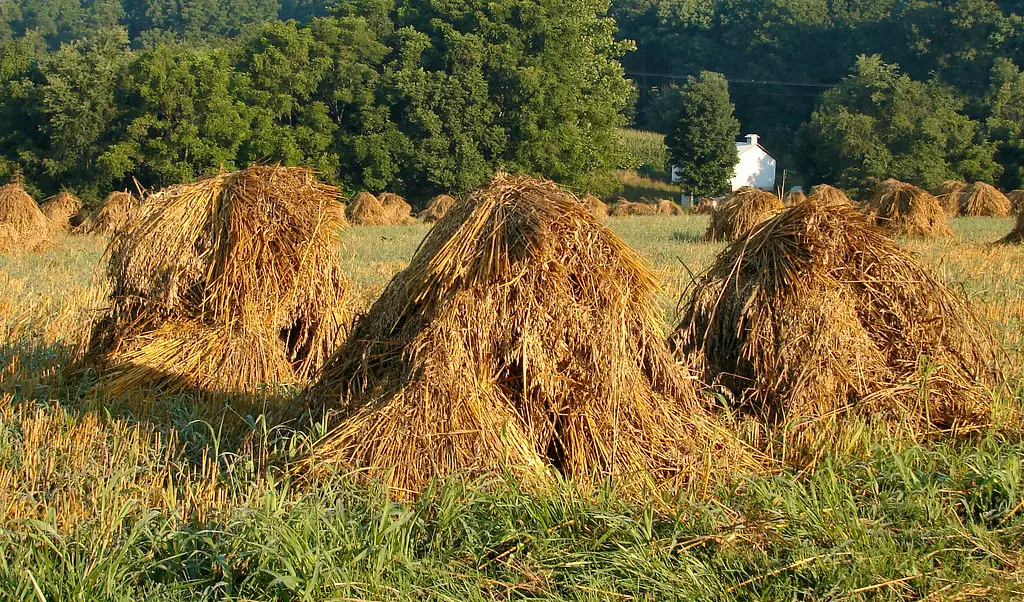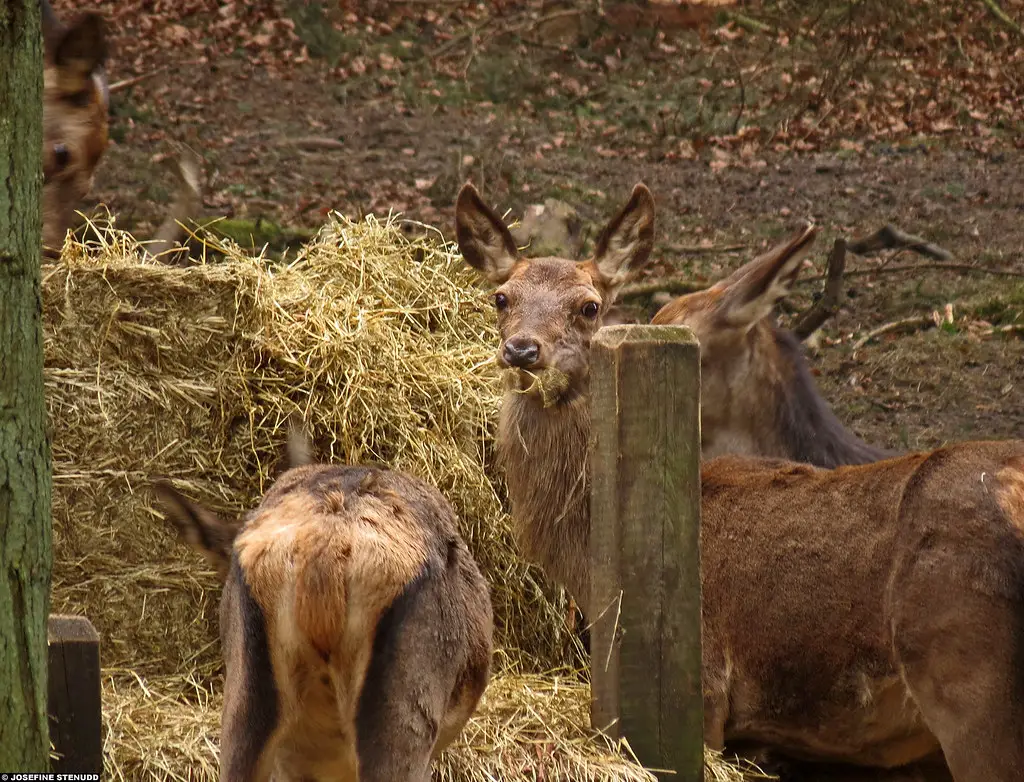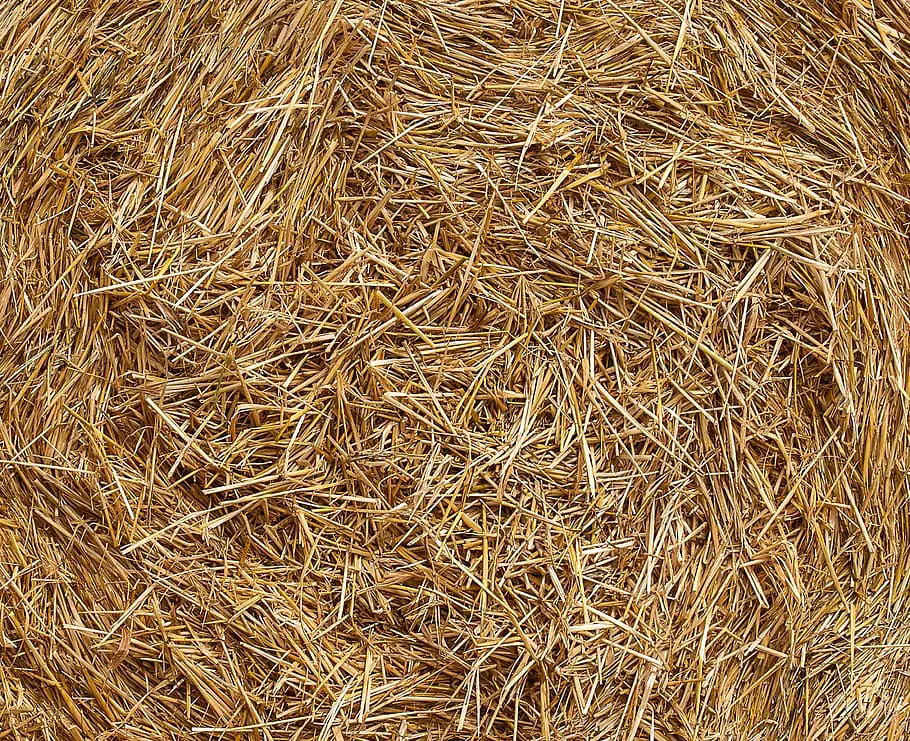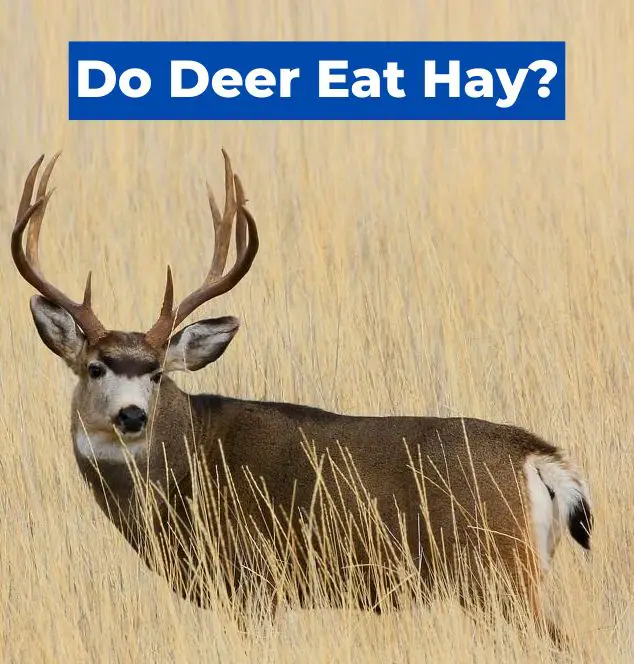Deer are known to be herbivores, feeding on grass, leaves, and herbs. However, there is a common question among deer enthusiasts: do deer eat hay? The answer is yes, deer can eat hay, but it is not the ideal food for them.
Hay is particularly dry and coarse, making it difficult for deer to digest. Unlike cows, a deer’s digestive system is complex and not designed to break down rough, coarse grass and similar vegetation. Although deer can eat hay, it is not recommended to feed it to them frequently. In fact, if they are not accustomed to it, it can do more harm than good.
If you are curious about why deer eat hay, or if you are considering feeding hay to deer, it is important to understand the pros and cons of doing so. In this article, we will explore the topic of deer and hay, including what deer eat in the wild, why hay is not the ideal food for them, and what alternative food sources are available.
What Is Hay?

Hay is a type of dried grass, legumes, or other plants that are used as animal feed. It is typically harvested in the summer when the plants have reached maturity and are at their peak nutritional value.
The plants are cut and then left to dry in the sun for several days, after which they are baled for storage and transportation.
Hay is commonly used as feed for domestic animals such as cows, horses, and sheep, but it can also be fed to wildlife such as deer.
In fact, many people who enjoy watching and hunting deer will provide hay as a supplemental food source during the winter months when natural forage is scarce.
Hay can come in many different varieties, depending on the type of plants used and the climate in which it was grown.
Some common types of hay include timothy, alfalfa, clover, and brome.
Each type of hay has its own unique nutritional profile and is better suited for certain types of animals and feeding scenarios.
Overall, hay is an important source of nutrition for many animals, including deer.
It is important to understand the nutritional needs of the animals being fed and to provide a balanced diet that includes a variety of different types of forage and supplements as needed.
Why Do Deer Eat Hay?

Deer are herbivores and primarily feed on grass, leaves, and herbs. However, when their natural food sources are scarce, they may turn to other food options, including hay.
Hay is a good source of fiber and nutrients that deer need to maintain a healthy digestive system. It is also a good option during periods of drought or when natural food sources are limited.
Deer may also be attracted to hay due to its taste and smell.
Fresh hay has a sweet aroma that can lure deer into an area where it has been placed.
It’s important to note that hay should not be the primary food source for deer.
It can be difficult for deer to digest and may cause digestive issues if consumed in large quantities.
In addition, hay does not provide the necessary protein and minerals that deer need for optimal health.
So while deer can eat hay, it should only be used as a supplement to their natural diet and should not be relied upon as their primary food source.
Deer and Their Diet
Deer are herbivorous animals that consume a variety of plant-based foods to meet their nutritional needs.
They are known to feed on grasses, forbs, shrubs, browse, twigs, leaves, fruits, and nuts.
The type of food consumed by deer varies depending on the species, season, and availability of food sources.
What Do Deer Eat?
Deer primarily feed on vegetation, which makes up the majority of their diet.
They prefer to consume young, tender plants that are rich in protein and energy.
Some of the common plants that deer eat include alfalfa, oats, corn, barley, wheat, lettuce, berries, and chestnuts.
Deer also require a source of fiber in their diet to maintain a healthy digestive system.
They obtain fiber from grasses, forbs, and shrubs. In addition, they need a source of minerals, such as calcium, to support their overall health and well-being.
The Digestive System of Deer
Deer have a unique digestive system that allows them to extract nutrients from tough, fibrous plant material.
Their digestive system consists of a four-chambered stomach, which allows them to digest their food in a slow and deliberate manner.
Deer are also known to have a complex microbial population in their digestive system, which helps them break down cellulose and other plant fibers.
This microbial population is essential for the deer to extract nutrients from their food.
Is Hay Good For Deer?
Hay can be a source of nutrition for deer, but it should be fed in moderation.
Deer are not adapted to consume large amounts of hay, as it is difficult for them to digest.
Hay is also low in nutritional value compared to other food sources, such as fresh vegetation.
Feeding deer hay can also alter their browsing mode, as they may become accustomed to the flavor and texture of hay.
This can lead to a decrease in their consumption of other nutritious food sources.
In conclusion, while deer can eat hay, it should not be their primary food source.
Providing a variety of fresh, nutritious vegetation is the best way to support the health and well-being of wild deer.
How To Keep Deer From Eating Hay

There are a few things to keep in mind when you’re protecting hay from deer: their habits, your scent, repellent options, and when you plant it.
Deer will eat nearly anything if they’re hungry enough, so your main goal is making your garden as least inviting to deer as possible.
Check out our guide on how to keep deer away from plants where we cover 25 quick and easy tips for keeping hungry deer out of your garden.
Even if deer pass on eating your hay, they may still trample and damage the plants while browsing nearby foliage, so you’ll want to take precautions to protect their hay from deer, such as using physical barriers or repellents.
Winter and Feeding Deer
Feeding Deer in Winter Months
During the winter months, natural food sources for deer become scarce. It is natural for people to want to help the deer and start feeding them.
Feeding deer in the winter can actually be harmful to them if not done properly.
Deer are adapted to eating winter browse, which includes the buds and twigs of woody plants.
Introducing new foods in the middle of winter, especially in high quantities all of a sudden, can actually be more harmful to deer than not feeding them at all.
If you do choose to feed deer during the winter months, it is important to do so in a controlled manner.
Feeding should be done at dusk or dawn, and only small amounts of food should be given.
Ideally, the food should be placed in a feeder or trough, rather than on the ground, to reduce the risk of spreading disease.
The Effects of Starvation on Deer
If deer are not able to find enough food during the winter months, they may experience starvation.
Starvation can have a number of negative effects on deer, including a decrease in body fat, antler size, and overall health.
Starvation can also make deer more vulnerable to predators and hunters because they may become more active during the day, which makes them more visible to predators and hunters.
Feeding deer is not a long-term solution to the problem of winter starvation: overpopulation and habitat destruction are two major factors that contribute to winter starvation in deer populations.
In conclusion, while it may be tempting to feed deer during the winter months, it is important to do so in a controlled manner, and to remember that feeding is not a long-term solution to the problem of winter starvation.
Deer are adapted to eating winter browse, and introducing new foods can actually be harmful to them.
Check out our other helpful wildlife and deer guides while you’re here:

